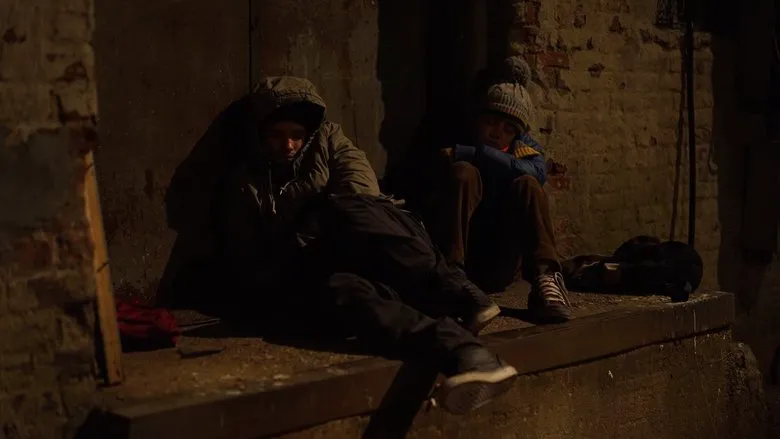The Soulful Steps of “Breaking Brooklyn”: A Behind-the-Scenes Look
“Breaking Brooklyn” is more than just a dance film; it’s a poignant exploration of family, forgotten dreams, and the transformative power of art. As viewers are swept into the journey of two young brothers and the aging showman who takes them in, it becomes clear that the magic on screen is born from a meticulous blend of heartfelt storytelling, dedicated performances, and evocative choreography. Let’s step behind the curtain to uncover the creative process that brought this heartwarming drama to life.
From Script to Screen: Crafting a Narrative of Redemption
The genesis of “Breaking Brooklyn” lies in its compelling narrative: the raw survival instincts of street kids, the quiet dignity of a retired artist, and the thorny path to mending fractured relationships. The filmmakers faced the challenge of weaving a complex tapestry of themes – abandonment, resilience, the pursuit of passion, and the pain of betrayal – into a cohesive and emotionally resonant story.
At its core, the film needed to balance the innocence and vulnerability of 12-year-old Jamie and his brother with the seasoned wisdom and lingering heartache of Marcus Thompson. Reportedly, the casting process for Marcus was crucial, seeking an actor who could embody not just the charisma of a former dance star but also the weariness of a man haunted by past choices and the paternal warmth he finds in the boys. The character of Leo, Marcus’s estranged partner, also required an actor capable of conveying a shared history of both triumph and deep-seated hurt, the silent tension between them speaking volumes.
Focusing on the young actors portraying Jamie and his brother was equally vital. Their journey from the harsh realities of the streets to finding stability and purpose through dance necessitated performances that conveyed grit, simmering trauma, and burgeoning hope. Directors and acting coaches worked closely with the young talent to ensure their emotional arcs felt authentic and deeply moving, grounding the film’s more dramatic turns in believable human experience.

The Rhythm of Life: Choreography and Dance as Character
Dance is undeniably the heartbeat of “Breaking Brooklyn.” It’s not merely background entertainment but a vital plot device, a means of expression, and a catalyst for healing and connection. The film required a sophisticated choreographic approach that could reflect both Marcus’s nostalgic, classic showman style and Jamie’s innate, developing talent, hinted at early in his fascination with Marcus’s tales.
The dance sequences were designed to serve the narrative, evolving as the characters transform. Initial scenes might subtly showcase Marcus’s lingering passion, perhaps through teaching Jamie fundamental steps. As Jamie’s skills grow, the routines become more elaborate, culminating in performances that signify his rising confidence and the strengthening bond with Marcus. The challenge for the choreographers was to illustrate the transfer of knowledge – Marcus passing on the “skills and techniques he learned from Leo” – visually, ensuring that the dance itself told a story within the broader narrative.
The film also had to visually represent the “darker side of the dance world,” depicting the “cutthroat competition and high stakes.” This was achieved not just through dramatic lighting and intense performances but also through the sheer precision and demanding nature of the choreography itself, reflecting the pressure faced by professional dancers.

Unraveling the Past: Emotional Depth and Production Challenges
A significant part of “Breaking Brooklyn’s” emotional core lies in the characters confronting their pasts. For Jamie and his brother, this meant revealing the abandonment by their dancer parents – a revelation that required sensitive handling by the scriptwriters and nuanced performances from the young actors. The crew focused on creating a safe and supportive environment for the child stars to delve into these raw emotions, ensuring their portrayals of resilience and quiet suffering resonated authentically.
Similarly, unraveling the mystery behind Marcus and Leo’s estrangement was key. The subtle thawing of their relationship, often through lingering glances or terse dialogues, underscores the film’s message of forgiveness. Filmmakers reportedly dedicated significant time to workshops and rehearsals for these scenes, allowing the actors playing Marcus and Leo to build a shared history and understand the complex layers of their long-held resentment and underlying affection.
Filming on location, particularly if set in Brooklyn, added another layer of authenticity, grounding the theatrical world of dance in a tangible, real-world setting. The backdrop of the city subtly reinforces the characters’ journey from vulnerability to finding their footing.
Ultimately, “Breaking Brooklyn” is a testament to the power of human connection and the enduring spirit found within unexpected families. Through the dedicated work of its cast and crew, the film steps beyond just showcasing dance; it embodies the very essence of human struggle, triumph, and the artistry that binds us together.